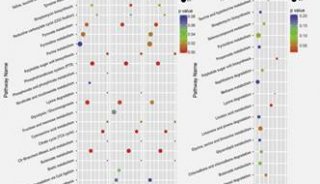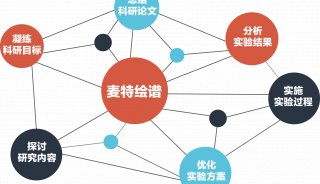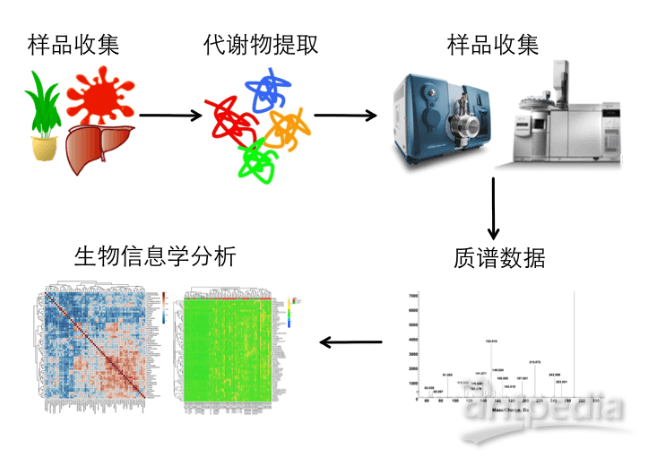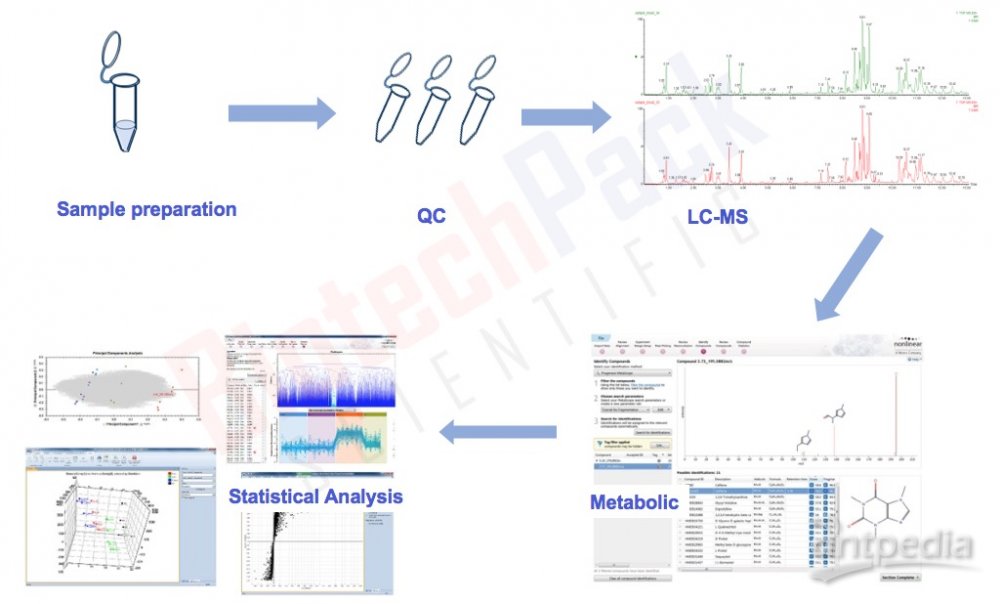Nature丨迟洪波组揭示代谢可以控制辅助性T细胞的可塑性
获得性免疫具有记忆效应。免疫系统在感染之后发展出的长期记忆T细胞可以应对未来感染。这些记忆T细胞具有干细胞性质。最近研究已经证实了在慢性感染中耗竭性CD8+ T细胞中,存在着一种独特的干细胞样的T细胞亚群【1】。然而,在慢性感染情况下,CD4+ T细胞是否也有类似性质的亚群仍不清楚。TH17细胞是CD4+T细胞的一个亚群。因可以分泌IL-17得以命名为TH17细胞。TH17细胞参与机体炎性反应和自身免疫性疾病。在自身免疫性疾病模型,如实验性自身免疫性脑脊髓炎(EAE)模型中,TH17细胞产生的GM-CSF、IFN-γ和IL-17是重要的致病原因【2】。TH17细胞具有高度的可塑性,可以在特性细胞因子或抗原的刺激下分化为Treg细胞,也可以分化为TH1样细胞。然而,这种可塑性的调控机制仍需进一步研究。
12月19日,Nature在线刊登了一则来自圣犹达儿童研究医院(St. Jude Children's Research Hospital)的迟洪波博士团队的题为Metabolic heterogeneity underlies reciprocal fates of TH17 cell stemness and plasticity的研究论文。该文章报道了在小鼠自身免疫性疾病模型中,TH17细胞具有功能和代谢上的异质性,而通过对mTORC1信号或代谢的干扰可以影响TH17细胞的可塑性。

作者发现在小鼠自身免疫性疾病模型(EAE模型)中,TH17细胞可以分成CD27+和CD27-两种亚群。CD27+细胞可以分化为CD27-细胞。随后的转录组分析证实了CD27+亚群具有记忆细胞的性质和低水平代谢活性,而CD27-亚群具有效应细胞的性质和高水平代谢活性。转录因子TCF-1, T-bet在这两种亚群中也有选择性表达。TCF在CD27+中高表达,T-bet在CD27-中高表达。
虽然代谢对T细胞的活化和分化过程非常重要,但代谢本身是否能调控T细胞命运的可塑性仍不清楚。作者通过小鼠遗传学操作,在TH17细胞中敲除mTORC1的重要成分Raptor来阻断mTORC1信号,发现在TH17细胞分化为TH1样细胞和诱导自身免疫性神经炎症的过程均受阻。机制上来说,mTORC1信号和细胞代谢影响了TCF-1和T-bet在这两种亚群的区别性表达。因此,mTORC1信号通过整合代谢和转录程序,在调控TH17细胞命运决定中起中心作用。随后的单细胞RNA测序结果也证实了TH17细胞命运图谱中的这种异质性以及mTORC1在TH17细胞中CD27+向CD27-细胞间转换的作用。
总之,这项研究表明在自身免疫病理过程中,TH17细胞中具有干细胞性质和效应细胞性质的两种亚群。证实了代谢异质性的存在,并首次证实了代谢可以控制辅助性T细胞的可塑性。很多成功的抗肿瘤治疗把肿瘤干细胞作为一个重要的治疗靶点,因此TH17细胞中干细胞性质亚群的鉴定为对治疗干预慢性炎症提供了新的治疗途径和前景。
原文链接:https://www.nature.com/articles/s41586-018-0806-7
作者介绍

迟洪波教授在美国罗彻斯特大学(University of Rochester)获得博士学位,随后加入Richard Flavell实验室进行博士后训练,研究MAPK信号在免疫调控中作用。并于2007年加入圣犹达儿童研究医院从事独立科研。作为是免疫代谢领域的杰出华人学者,迟洪波教授主要从事T细胞所介导的适应性免疫的信号和代谢通路研究,在T细胞命运和功能研究中解析免疫信号和细胞代谢的相互作用以及树突状细胞介导的T细胞反应的外部控制信号方面取得了突出的学术成绩。
迟洪波教授近期的以通讯作者身份发表的研究成果包括mTORC信号以及其他代谢信号在调控免疫细胞功能中作用。主要包括 mTORC1信号在T细胞命运决定中的作用【3】(Science Immunology, 2018),mTORC1在调控T细胞静息和分化中的作用【4】(Immunity,2013), mTORC1在Treg功能建立中作用【5】(Nature,2013)。mTORC1/2信号和葡萄糖代谢在滤泡辅助性T细胞分化中的作用【6】(Immunity,2016)。Tsc1在调控初始T细胞静息状态的作用【7】(Nature Immunology,2011)。S1P-mTOR信号在调控TH1和Treg细胞分化中作用【8】(Nature Immunology, 2010)和在抑制Treg细胞活性中作用【9】(Nature Immunology, 2009)。Hippo/MST信号整合代谢和细胞因子信号在CD8α+树突状细胞【10】(Nature, 2018)和Treg细胞(Nature Immunology, 2018 )免疫中的作用【11】。LKB1信号在调控Treg细胞代谢和功能适应性中的作用【12】(Nature, 2017)。通过蛋白组学和磷酸化蛋白组学研究T细胞活化中的机制【13】(Immunity, 2017)。自噬【14】(Nature Immunology, 2016)和PTEN【15】(Nature Immunology, 2015)在调控Treg细胞功能中作用。树突状细胞中MAPK P38α信号在驱动TH17细胞分化中作用【16】(Nature Immunology, 2012)。树突状细胞中MKP-1在树突状细胞调控T细胞功能中作用【17】(Immunity, 2011)。以及JEM、JCI等杂志上发表的多篇研究论文。
参考文献
1.He, R., S. Hou, C. Liu, A. Zhang, Q. Bai, M. Han, et al. 2016. Follicular CXCR5 -expressing CD8(+) T cells curtail chronic viral infection. Nature 537: 412-428.
2.McGinley, A. M., S. C. Edwards, M. Raverdeau, and K. H. G. Mills. 2018. Th17cells, gammadelta T cells and their interplay in EAE and multiple sclerosis. Journal of autoimmunity.
3.Yang, K., D. B. Blanco, X. Chen, P. Dash, G. Neale, C. Rosencrance, et al. 2018. Metabolic signaling directs the reciprocal lineage decisions of alphabeta and gammadelta T cells. Science immunology 3.
4.Yang, K., S. Shrestha, H. Zeng, P. W. Karmaus, G. Neale, P. Vogel, et al. 2013. T cell exit from quiescence and differentiation into Th2 cells depend on Raptor-mTORC1-mediated metabolic reprogramming. Immunity 39: 1043-1056.
5.Zeng, H., K. Yang, C. Cloer, G. Neale, P. Vogel, and H. Chi. 2013. mTORC1 couples immune signals and metabolic programming to establish T(reg)-cell function. Nature 499: 485-490.
6.Zeng, H., S. Cohen, C. Guy, S. Shrestha, G. Neale, S. A. Brown, et al. 2016. mTORC1 and mTORC2 Kinase Signaling and Glucose Metabolism Drive Follicular Helper T Cell Differentiation. Immunity 45: 540-554.
7.Yang, K., G. Neale, D. R. Green, W. He, and H. Chi. 2011. The tumor suppressor Tsc1 enforces quiescence of naive T cells to promote immune homeostasis and function. Nature immunology 12: 888-897.
8.Liu, G., K. Yang, S. Burns, S. Shrestha, and H. Chi. 2010. The S1P(1)-mTOR axis directs the reciprocal differentiation of T(H)1 and T(reg) cells. Nature immunology 11: 1047-1056.
9.Liu, G., S. Burns, G. Huang, K. Boyd, R. L. Proia, R. A. Flavell, et al. 2009. The receptor S1P1 overrides regulatory T cell-mediated immune suppression through Akt-mTOR. Nature immunology 10: 769-777.
10.Du, X., J. Wen, Y. Wang, P. W. F. Karmaus, A. Khatamian, H. Tan, et al. 2018. Hippo/Mst signalling couples metabolic state and immune function of CD8alpha(+) dendritic cells. Nature 558: 141-145.
11.Shi, H., C. Liu, H. Tan, Y. Li, T. M. Nguyen, Y. Dhungana, et al. 2018. Hippo Kinases Mst1 and Mst2 Sense and Amplify IL-2R-STAT5 Signaling in Regulatory T Cells to Establish Stable Regulatory Activity. Immunity 49: 899-914.e896.
12.Yang, K., D. B. Blanco, G. Neale, P. Vogel, J. Avila, C. B. Clish, et al. 2017. Homeostatic control of metabolic and functional fitness of Treg cells by LKB1 signalling. Nature 548: 602-606.
13.Tan, H., K. Yang, Y. Li, T. I. Shaw, Y. Wang, D. B. Blanco, et al. 2017. Integrative Proteomics and Phosphoproteomics Profiling Reveals Dynamic Signaling Networks and Bioenergetics Pathways Underlying T Cell Activation. Immunity 46: 488-503.
14.Wei, J., L. Long, K. Yang, C. Guy, S. Shrestha, Z. Chen, et al. 2016. Autophagy enforces functional integrity of regulatory T cells by coupling environmental cues and metabolic homeostasis. Nature immunology 17: 277-285.
15.Shrestha, S., K. Yang, C. Guy, P. Vogel, G. Neale, and H. Chi. 2015. Treg cells require the phosphatase PTEN to restrain TH1 and TFH cell responses. Nature immunology 16: 178-187.
16.Huang, G., Y. Wang, P. Vogel, T. D. Kanneganti, K. Otsu, and H. Chi. 2012. Signaling via the kinase p38alpha programs dendritic cells to drive TH17 differentiation and autoimmune inflammation. Nature immunology 13: 152-161.
17.Huang, G., Y. Wang, L. Z. Shi, T. D. Kanneganti, and H. Chi. 2011. Signaling by the phosphatase MKP-1 in dendritic cells imprints distinct effector and regulatory T cell fates. Immunity 35: 45-58.
-
仪器推荐

-
仪器推荐

-
仪器推荐
 询底价 Tel:400-6699-117 转 8888
询底价 Tel:400-6699-117 转 8888 -
仪器推荐

-
仪器推荐





















